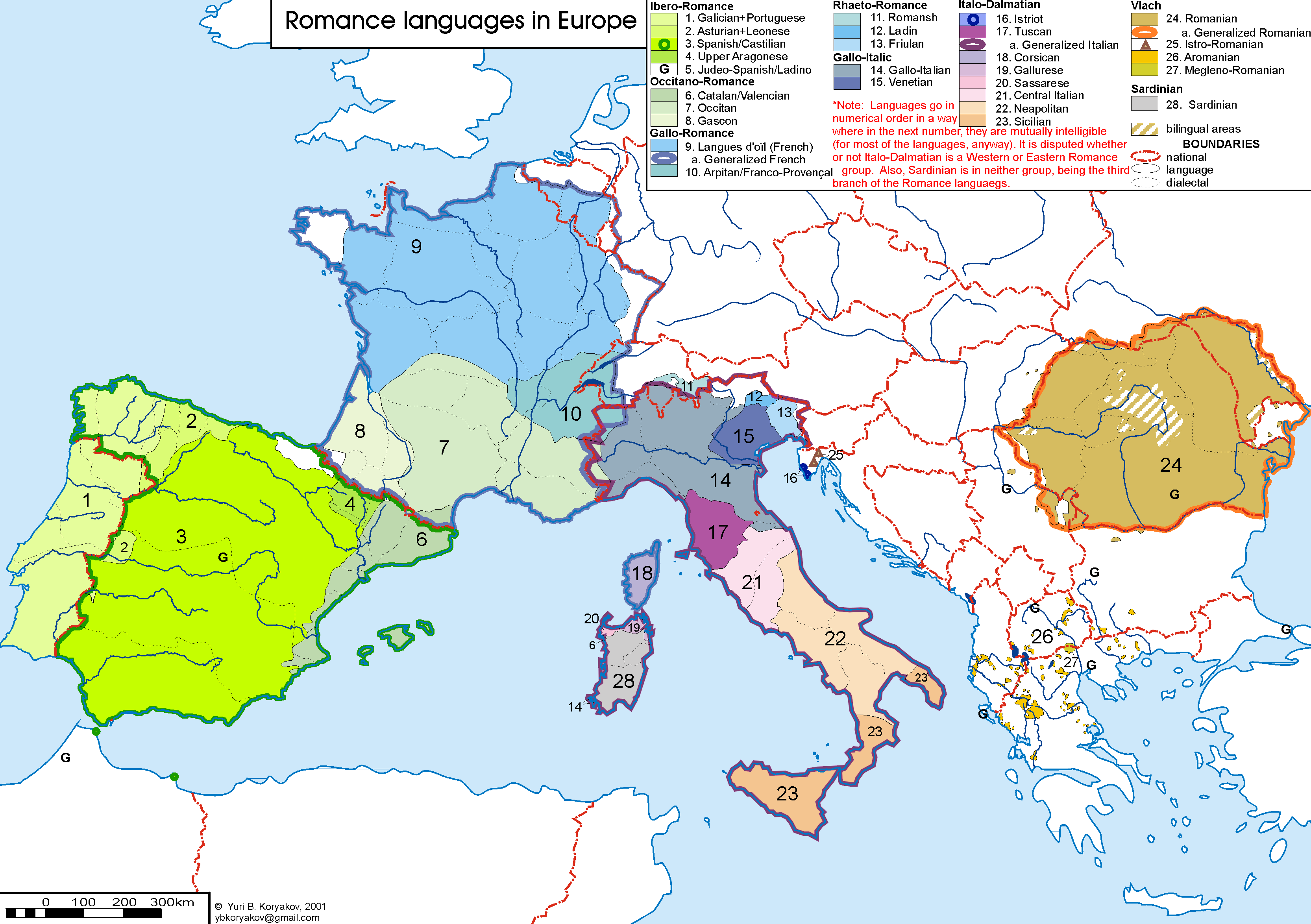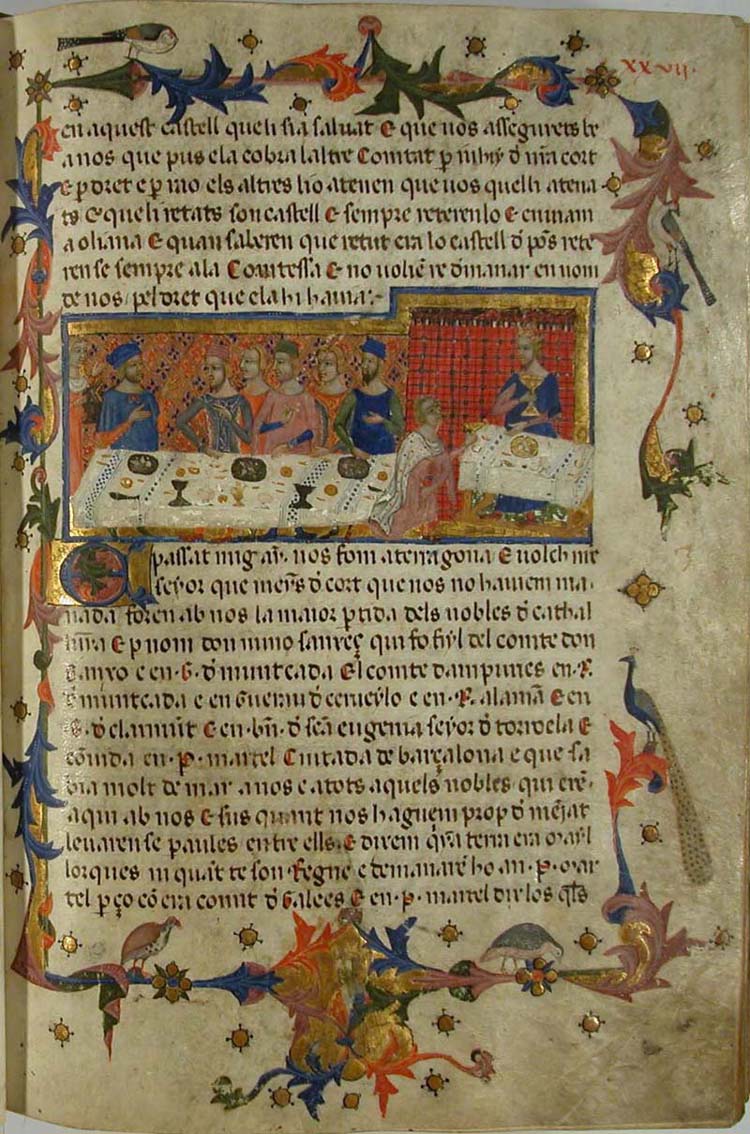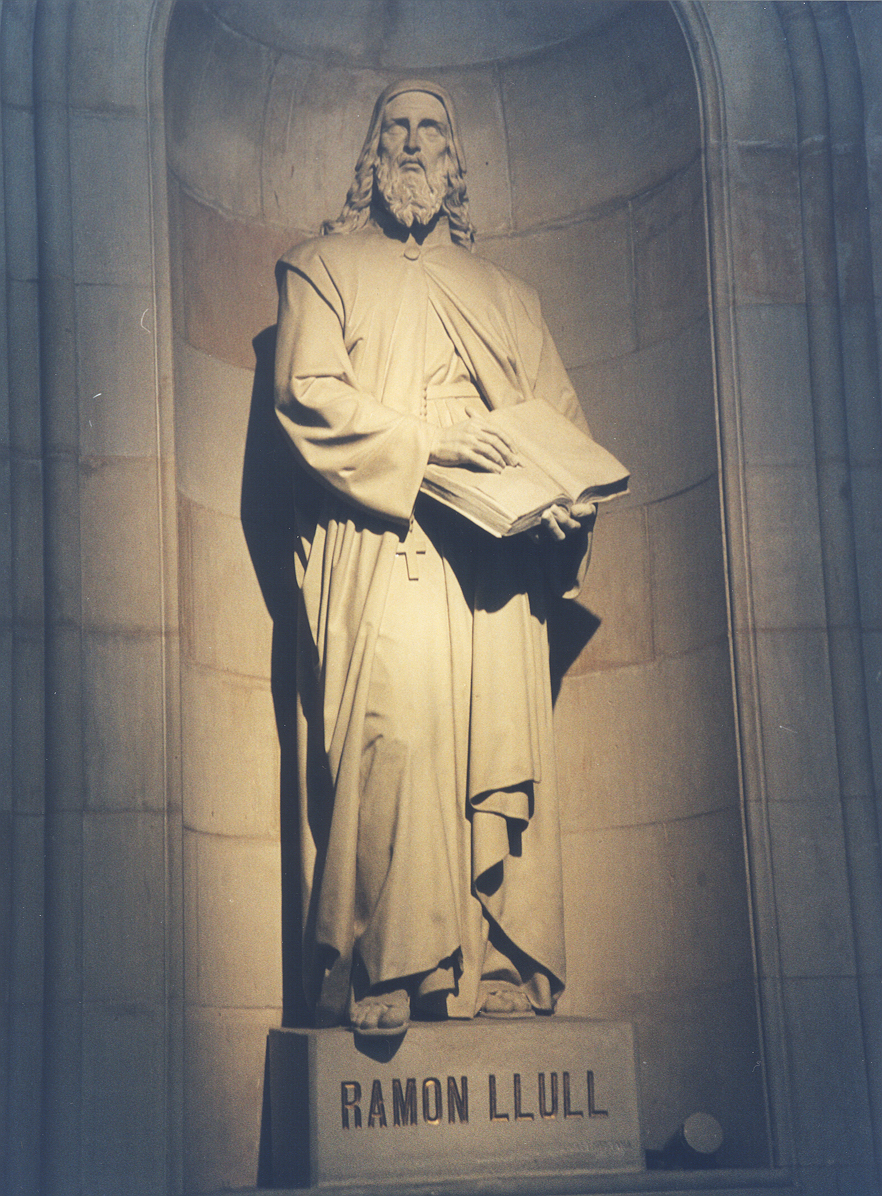|
Catalan Literature
Catalan literature (or Valencian literature) is the name conventionally used to refer to literature written in the Catalan language. The focus of this article is not just the literature of Catalonia, but literature written in Catalan from anywhere, so that it includes writers from Andorra, the Valencian Community, Balearic Islands and other territories where any Catalan variant is spoken. The Catalan literary tradition is extensive, starting in the early Middle Ages. A Romantic revivalist movement of the 19th century, Renaixença, classified Catalan literature in periods. The centuries long chapter known as ''Decadència'' that followed the golden age of Valencian literature, was perceived as extremely poor and lacking literary works of quality. Further attempts to explain why this happened (see History of Catalonia) have motivated new critical studies of the period, and nowadays a revalorisation of this early modern age is taking place. Catalan literature reemerged in the 19th ... [...More Info...] [...Related Items...] OR: [Wikipedia] [Google] [Baidu] |
Romance Language
The Romance languages, also known as the Latin or Neo-Latin languages, are the languages that are Language family, directly descended from Vulgar Latin. They are the only extant subgroup of the Italic languages, Italic branch of the Indo-European languages, Indo-European language family. The five list of languages by number of native speakers, most widely spoken Romance languages by number of native speakers are: * Spanish language, Spanish (489 million): official language in Spain, Mexico, Equatorial Guinea, the Sahrawi Arab Democratic Republic, SADR, Cuba, Dominican Republic, Puerto Rico and most of Central America, Central and South America * French language, French (310 million): official in 26 countries * Portuguese language, Portuguese (240 million): official in Portugal, Brazil, Portuguese-speaking African countries, Portuguese-speaking Africa, Timor-Leste and Macau * Italian language, Italian (67 million): official in Italy, Vatican City, San Marino, Switzerland; mi ... [...More Info...] [...Related Items...] OR: [Wikipedia] [Google] [Baidu] |
Crònica De Jaume I
The (; from Catalan, 'Book of Deeds'; Old Catalan: ) is the autobiographical chronicle of the reign of James I of Aragon (1213–1276). It is written in Old Catalan in the first person and is the first chronologically of the four works classified as The Four Great Catalan Chronicles, all belonging to the early medieval Crown of Aragon (in the northeastern part of what is now Spain), and its first royal dynasty, the House of Barcelona. James I inherited as a child the titles of King of Aragon, Count of Barcelona, and Lord of Montpellier, but also became by conquest King of Majorca and King of Valencia. James emphasises in his chronicles his conquest of Majorca (1229) and of Valencia (1238). James I of Aragon dedicates a couple of chapters to his mother Maria of Montpellier and his father Peter II of Aragon (called "Peter the Catholic"), who had been given the title of "" by the Pope after the Battle of Las Navas de Tolosa in which he helped Alfonso VIII of Castile fight again ... [...More Info...] [...Related Items...] OR: [Wikipedia] [Google] [Baidu] |
Crown Of Aragon
The Crown of Aragon (, ) ;, ; ; . was a composite monarchy ruled by one king, originated by the dynastic union of the Kingdom of Aragon and the County of Barcelona (later Principality of Catalonia) and ended as a consequence of the War of the Spanish Succession. At the height of its power in the 14th and 15th centuries, the Crown of Aragon was a thalassocracy controlling a large portion of present-day eastern Iberian Peninsula, parts of what is now Northern Catalonia, southern France, and a Mediterranean empire which included the Balearic Islands, Sicily, Corsica, Sardinia, Malta, Southern Italy (from 1442), and parts of Greece (until 1388). The component realms of the Crown were not united politically except at the level of the king, who ruled over each autonomous polity according to its own laws, raising funds under each tax structure, dealing separately with each ''Corts'' or ''Cortes'', particularly in the Kingdom of Aragon, the Principality of Catalonia, and the Kingdom of V ... [...More Info...] [...Related Items...] OR: [Wikipedia] [Google] [Baidu] |
Llibre D'Amic E Amat
The Romance of Evast and Blaquerna (Old Catalan: ''Romanç d'Evast e Blaquerna''), often shortened to ''Blaquerna'' or ''Blanquerna'', is a novel written in Catalan between 1283 and 1285 by the Majorcan Ramon Llull. It chronicles the life of its eponymous hero. It is the first major work of literature written in the Balearic Islands, regarded as a founding work of Catalan literature and one of the first European novels. Structure The novel is divided into five parts. Robert M. Place, ''Buddha Tarot'' (Llewellyn Worldwide: 2004), 56. Llull's ''Llibre d'Amic e d'Amat'' (''Book of the Friend and Beloved'') is often included as a semiautonomous section within ''Blanquerna''.Josiah Blackmore; Gregory S. Hutcheson, ''Queer Iberia: Sexualities, Cultures, and Crossings from the Middle Ages to the Renaissance'' (Duke University Press: 1999), 170. Plot summary The central character of the novel named after him, Blanquerna, was born to Evast and Aloma. Before marrying, Evast, a noblema ... [...More Info...] [...Related Items...] OR: [Wikipedia] [Google] [Baidu] |
Philosophy
Philosophy ('love of wisdom' in Ancient Greek) is a systematic study of general and fundamental questions concerning topics like existence, reason, knowledge, Value (ethics and social sciences), value, mind, and language. It is a rational and critical inquiry that reflects on its methods and assumptions. Historically, many of the individual sciences, such as physics and psychology, formed part of philosophy. However, they are considered separate academic disciplines in the modern sense of the term. Influential traditions in the history of philosophy include Western philosophy, Western, Islamic philosophy, Arabic–Persian, Indian philosophy, Indian, and Chinese philosophy. Western philosophy originated in Ancient Greece and covers a wide area of philosophical subfields. A central topic in Arabic–Persian philosophy is the relation between reason and revelation. Indian philosophy combines the Spirituality, spiritual problem of how to reach Enlightenment in Buddhism, enlighten ... [...More Info...] [...Related Items...] OR: [Wikipedia] [Google] [Baidu] |
Ramon Llull
Ramon Llull (; ; – 1316), sometimes anglicized as ''Raymond Lully'', was a philosopher, theologian, poet, missionary, Christian apologist and former knight from the Kingdom of Majorca. He invented a philosophical system known as the ''Art'', conceived as a type of universal logic to prove the truth of Christian doctrine to interlocutors of all faiths and nationalities. The ''Art'' consists of a set of general principles and combinatorial operations. It is illustrated with diagrams. A prolific writer, he is also known for his literary works written in Catalan, which he composed to make his ''Art'' accessible to a wider audience. In addition to Catalan and Latin, he also probably wrote in Arabic (although no texts in Arabic survive). His books were translated into Occitan, French, and Castilian during his lifetime. Although his work did not enjoy huge success during his lifetime, he has had a rich and continuing reception. In the early modern period his name became asso ... [...More Info...] [...Related Items...] OR: [Wikipedia] [Google] [Baidu] |
Virgin Mary
Mary was a first-century Jewish woman of Nazareth, the wife of Saint Joseph, Joseph and the mother of Jesus. She is an important figure of Christianity, venerated under titles of Mary, mother of Jesus, various titles such as Perpetual virginity of Mary, virgin or Queen of Heaven, queen, many of them mentioned in the Litany of Loreto. The Eastern Orthodox Church, Eastern and Oriental Orthodox, Catholic, Anglican, Methodist, Reformed Christianity, Reformed, Baptist, and Lutheran churches believe that Mary, as mother of Jesus, is the Theotokos, Mother of God. The Church of the East historically regarded her as Christotokos, a term still used in Assyrian Church of the East liturgy. Other Protestant views on Mary vary, with some holding her to have lesser status. She has the Mary in Islam, highest position in Islam among all women and is mentioned numerous times in the Quran, including in a chapter Maryam (surah), named after her.Jestice, Phyllis G. ''Holy people of the world: a cros ... [...More Info...] [...Related Items...] OR: [Wikipedia] [Google] [Baidu] |
Planctus
A ''planctus'' (" plaint") is a lament or dirge, a song or poem expressing grief or mourning. It became a popular literary form in the Middle Ages, when they were written in Latin and in the vernacular (e.g., the '' planh'' of the troubadours). The most common ''planctus'' is to mourn the death of a famous person, but a number of other varieties have been identified by Peter Dronke. The earliest known example, the '' Planctus de obitu Karoli'', was composed around 814, on the death of Charlemagne. Other ''planctus'' from the ninth century include vernacular laments in a woman's voice, Germanic songs of exile and journeying, and ''planctus'' on biblical or classical themes (like the Latin '' Planctus cygni'', which is possibly derived from Germanic models). The earliest examples of music for ''planctus'' are found in tenth-century manuscripts associated with the Abbey of Saint Martial of Limoges. From the twelfth century Dronke identifies a growing number of laments of the Virgin ... [...More Info...] [...Related Items...] OR: [Wikipedia] [Google] [Baidu] |
Augats, Seyós Qui Credets Déu Lo Payre
''Augats, seyós qui credets Déu lo Payre'' (, sometimes called the ''Plany de la Verge'') is a Catalan poem of lamentation (''planctus'') in the ''planctus Mariae'' tradition, in which the Virgin Mary laments the death of her son. It was written between 1240 and 1260 and is thus one of the oldest Catalan poems, although it comes two hundred years after the ''Cançó de Santa Fe''. The piece is sometimes confused with the ''Plant de la Verge'' of Ramon Llull. Structurally, ''Augats'' is divided into twelve stanzas, each composed of five monorhyming decasyllabic lines followed by tetrasyllabic single-line refrain and a final decasyllabic line without rhyme. The language of the poem is heavily influenced by the Occitan of the troubadours and the courtly love lyric. The poem is preserved in four manuscripts. It was first brought to light by Jaime Villanueva in 1821, when he redacted it for publication from a manuscript in the archives of the church of Àger. Villanueva found it e ... [...More Info...] [...Related Items...] OR: [Wikipedia] [Google] [Baidu] |
Occitan Language
Occitan (; ), also known by its native speakers as (; ), sometimes also referred to as Provençal, is a Romance language spoken in Southern France, Monaco, Italy's Occitan Valleys, as well as Spain's Val d'Aran in Catalonia; collectively, these regions are sometimes referred to as Occitania. It is also spoken in Calabria ( Southern Italy) in a linguistic enclave of Cosenza area (mostly Guardia Piemontese) named Gardiol, which is also considered a separate Occitanic language. Some include Catalan as a dialect of Occitan, as the linguistic distance between this language and some Occitan dialects (such as the Gascon language) is similar to the distance between different Occitan dialects. Catalan was considered a dialect of Occitan until the end of the 19th century and still today remains its closest relative. Occitan is an official language of Catalonia, Spain, where a subdialect of Gascon known as Aranese is spoken (in the Val d'Aran). Since September 2010, the Par ... [...More Info...] [...Related Items...] OR: [Wikipedia] [Google] [Baidu] |





